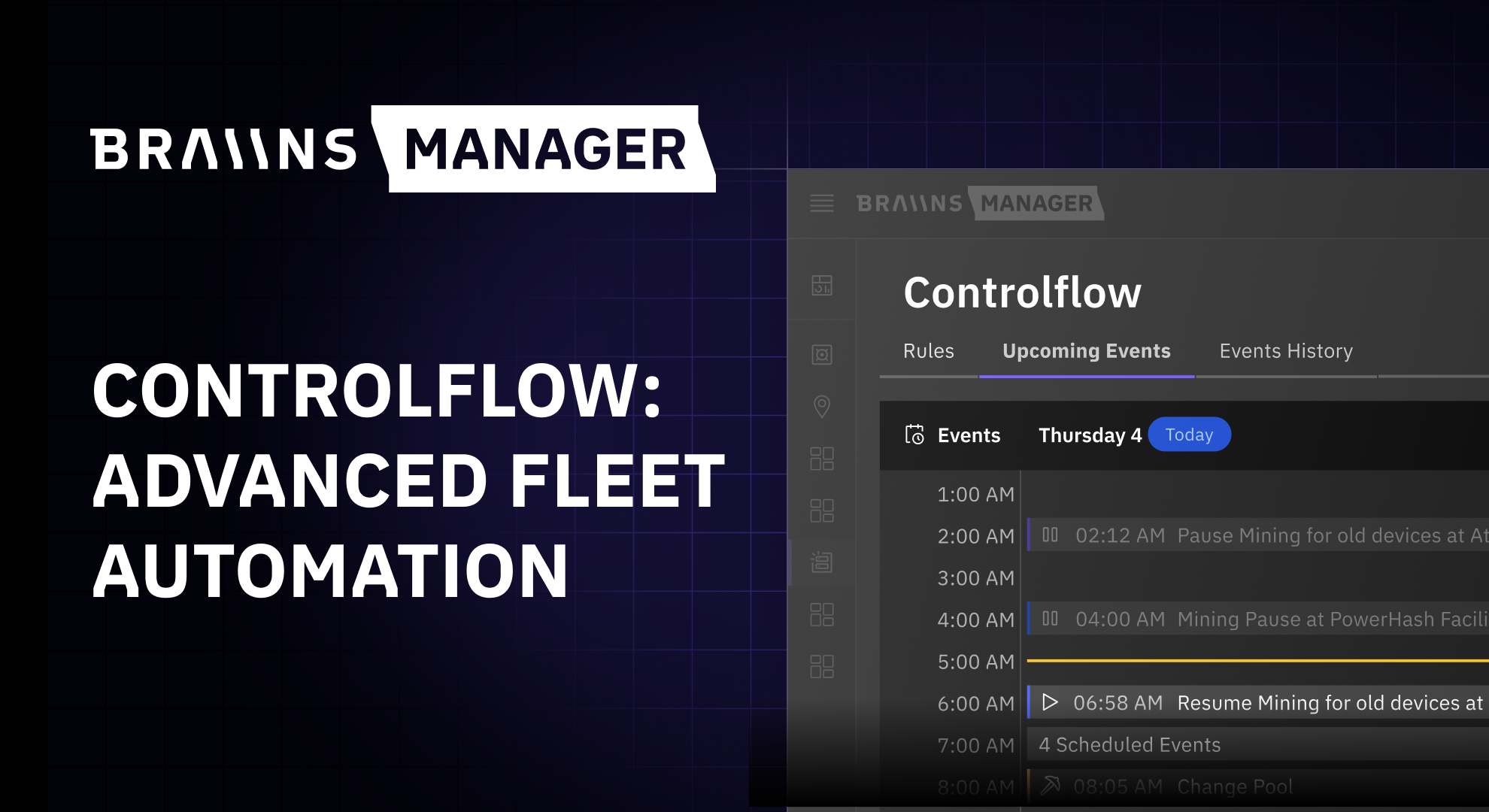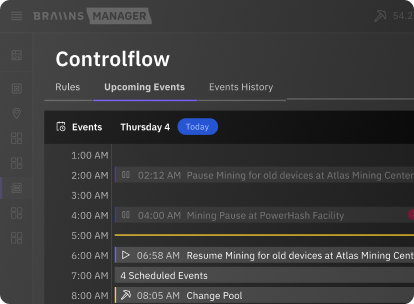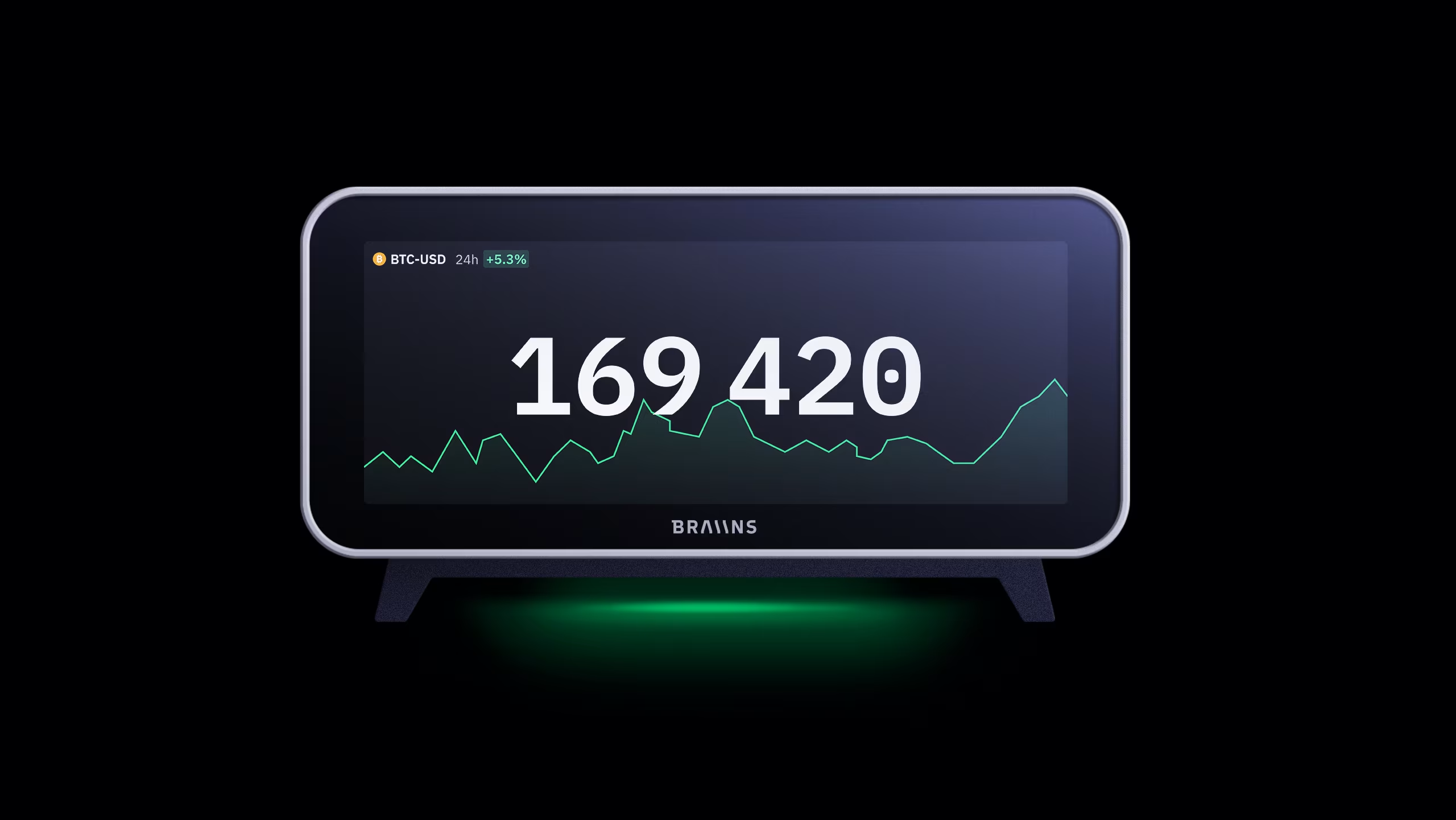ASIC Autotuning: The Best Way to Maximize Bitcoin Mining Profitability
Published
25.5.2023
Braiins OS is famous for Autotuning, which is an industry-leading custom firmware feature that helps miners maximize their efficiency at any power target. It pairs tremendously with overclocking to maximize revenue and profitability for bitcoin miners during bull runs. On the other hand, it also maximizes underclocking capabilities for miners during bear markets. This blog explains what Autotuning is and the strategies to use it with overclocking and underclocking.

Table of Contents
Custom Mining Firmware for Bitcoin Miners
All ASIC bitcoin miners come with a stock operating system–called a firmware–made by the manufacturer. The stock firmware allows machines to operate, but it’s important to remember, it’s made by a hardware company, not a software company. That’s where aftermarket firmware comes in.
Custom aftermarket firmwares are specially built to get the most out of your bitcoin miners. This is not only related to efficiency and profitability, but also to temperature management and control. As we know, temperature management is key to maximizing uptime–especially in the summer months. Maximum uptime leads to maximum profitability, too.
Autotuning Improves Your BTC Mining Profitability
Every ASIC chip is unique. Not all chips are created equally. In the manufacturing of ASIC chips, small variations in the process, voltage, and temperature of the semiconductor die can all result in on-chip variations. When you are working on the scale of single-digit nanometers and measuring individual atoms, even “tiny” imperfections and alignment issues in the semiconductor manufacturing process have a significant impact on the performance of the circuits. Braiins OS can identify the differences in all chips in a bitcoin miner in order to maximize hashrate at any power target.

Optimizing Mining Chips for Increased Mining Efficiency
Autotuning optimizes ASICs by going through each individual chip, finding the stronger ones, and sending them most of the work. The weaker chips then do less work. This leads to an increase in hashrate at the same power target–an overall efficiency boost for the entire machine.

Autotuning can automatically find the best setting for every chip in a bitcoin miner–usually there are over 300 per machine. It takes just 30 minutes for Autotuning to take effect, letting you maximize your efficiency in a minimal amount of time.
Simply put, Autotuning is the best feature on the market to get the most out of your bitcoin miners. Mine more bitcoin at any power target.
ASIC Autotuning Complements Your Power Strategy
Autotuning gives you more profits—regardless of power strategy. It doesn’t matter if you use the default power target or if you underclock or overclock. Tuning will make you mine more bitcoin regardless. The table below shows more about how this works, comparing stock firmware to Braiins OS.
Your power strategy as a bitcoin miner is the most important part of your operation. If the economics aren’t right, you will fail. Autotuning helps maximize your electricity use. As you know, Autotuning maximizes your hashrate, regardless of what your electricity consumption is.
Autotuning doesn’t just work with any power strategy–Autotuning IS the best power strategy. In such a cutthroat industry, this type of profitability boost offers miners some much needed relief.

ASIC Autotuning vs. Overclocking
Autotuning and overclocking are often mistakenly thought of as the same tools. While both do increase your hashrate, autotuning does so at the same power target. Overclocking requires additional energy and therefore costs. As mentioned, Autotuning makes the better chips work more. Overclocking makes all chips work more. This comes with a necessary increase in overall electricity consumption. That’s the main difference between the two–Autotuning provides more hashrate at the same power target, while overclocking provides more hashrate at a higher power target.
Despite the lower efficiency associated with overclocking, it is still a strong bitcoin mining strategy to increase revenue through bull runs. It is popular for a reason. Still, Autotuning can even optimize overclocking–remember, it maximizes your efficiency at any power target, even a higher one.
The best overclocking strategy should include Autotuning–that way, you still reap the rewards of more hashrate while benefitting from a lower electricity bill.
Conclusions: Autotuning and overclocking can give miners even better efficiency than stock settings. Combining the two is the best way to ride out bull runs. You shouldn’t have to choose between Autotuning OR overclocking–you should do both thanks to Braiins OS.
Unfortunately, bear markets are something bitcoin miners are all too familiar with. When profitability is down–or even negative–it is key to monitor your electricity use, your biggest expense as a miner. One common strategy that has emerged is underclocking. Underclocking is where you run miners at a lower power target, which typically increases your efficiency. This gives better profitability which is key in a bear market.
Generally speaking, two of the same ASICs underclocking at 2000 Watts each will almost certainly miner more bitcoin than one ASIC running at 4000 Watts.
Conclusion: Underclocking is maximized thanks to Autotuning on Braiins OS. Most stock firmwares offer only one lower power setting, so your flexibility is greatly improved with aftermarket firmwares like Braiins OS.
How to Install Our Custom Firmware to Increase Profitability Today
At the end of the day, it is key to remember that Autotuning is vital to an elite bitcoin mining power strategy. Without it, you’re leaving sats on the table.
Our aftermarket firmware has more features such as Dynamic Performance Scaling, which increases lifespan like Autotuning while also helping with thermal regulation and temperature control. For more information on DPS, read this detailed article.
Braiins OS is incredibly easy to install on your miners. Download our firmware and mine more bitcoin today.
For assistance on how to install Braiins OS, please check out these two videos. First, you’ll need to download Braiins Toolbox and perform a network scan.
Then, you are free to install Braiins OS.
For more information, please feel free to check out Braiins Academy.

Remember: to mine more bitcoin, mine with Braiins.
Categories
Be the first to know!
Read Privacy Policy.
More from
Mining Software
Most Recent Articles
.png)
The Best Bitcoin Conferences & Events of 2026
29.12.2025

Introducing Controlflow: Advanced Automation in Braiins Manager
9.12.2025



